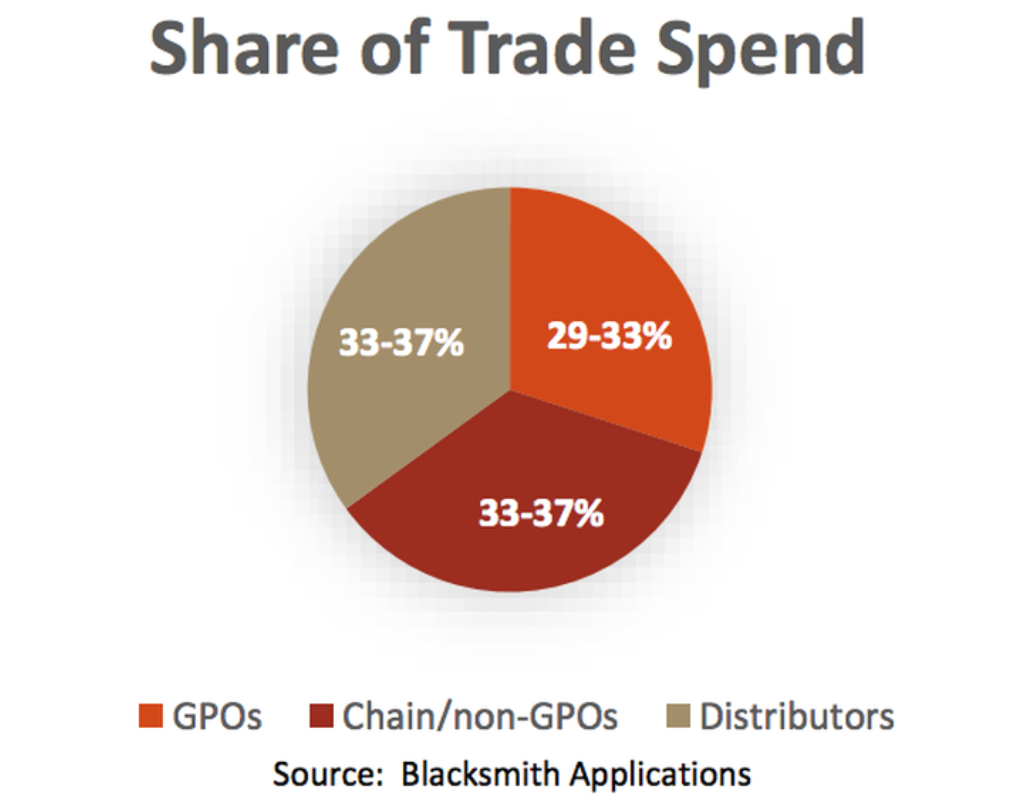by: Gary Karp
March 13, 2017
 Currently, many manufacturers are struggling with the weight of their trade spending budget. In many cases the “obesity” of trade spending exists as other very important expenses have been on an ongoing diet.
Currently, many manufacturers are struggling with the weight of their trade spending budget. In many cases the “obesity” of trade spending exists as other very important expenses have been on an ongoing diet.
As evidence of the basis of concern, following are some trade spending facts confirmed in recent research.
Trade spending for many manufacturers is now/remains on average:
1. The second largest line item on their P&L after cost of goods
2. More than triple the cost of sales expense
3. More than the costs of sales & marketing combined
Additionally, as manufacturers consider putting their trade budgets on a diet, there is a concern over “hollow calories,” as many manufacturers lament that despite the high rate of trade spending, the return on investment (ROI) for the money significantly lags the spending. Further, add to the equation that while manufacturers say they intend to spend more money directly with operators, the reality is that spending with distributors & GPOs continues to increase even as volume growth has slowed and we are in a “take share environment”.
Many manufacturers have effective trade software systems and processes for managing trade spending. However, while there has been a significant increase in the nature, quality and types of tools available to assist with trade spend management challenges, there has also been a significant increase in the amount of data. Now more than ever it is worth “data mining” to prevent “tipping the scales” on spending.
Recent research showing share of trade spending indicates a reasonably balanced spend between trading partners. Are the benefits and support similarly balanced?

Some “lower calorie” food for thought on trade spending:
1. Provide your sales team with training in negotiating skills. Power buyers are well schooled in this area. Don’t allow your team to be “out skilled”.
2. Identify the 3-5 strategic objectives that you want from trading partners in return for the trade dollars you provide … and ensure that you get the value for your $$$.
3. Ensure that you understand all that is contained in each and every trade agreement. Be sure you give and get what is agreed to, no more no less. Practice good “portion control”. 4. Maximize spending closest to the customer’s decision point, and minimize spending that truly doesn’t generate support for your brands and products.
5. Segment your trading partners based on which ones can and do most influence operators as to the brands and products they buy. “Feed” the best the most!
The bottom line for trade spending is, Pentallect estimates the average trade on further processed products is 16 -19 %, with some at the upper end of the range approaching 27- 30%. Further, there has been and continues to be, a shift from “investment” to “insurance. This is especially true as more national distributors move the funds to corporate and GPOs approve more suppliers in categories.
Trade expenditures have become such a significant part of manufacturers “go to market” strategy and budget that “good dieting practice” requires focused, active and aggressive strategic trade spend management.
Do you have a trade spending personal trainer? For information on trade spend personal training, contact Gary Karp

